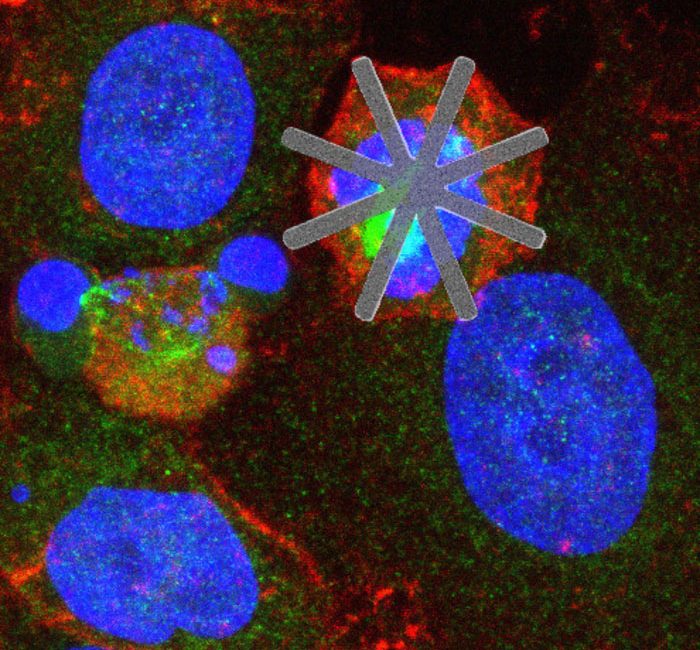| Apr 27, 2022 |
|
(Nanowerk News) A multidisciplinary team at CSIC has introduced silicon chips 50 nanometres thick, as thin as a thousandth part of a hair, into living cells. These devices allow the study of cell division processes and can even be designed to interfere with the cell cycle, preventing division and causing cell death. This study opens new lines of research in the field of nanomedicine.
|
|
The work has been co-directed by the Institute of Microelectronics of Barcelona (IMB-CNM-CSIC) and the Margarita Salas Center for Biological Research (CIB-CSIC), with the participation of the Institute of Nanoscience and Nanotechnology of the University of Barcelona (IN2UB). The results have been published in the journal Advanced Materials (“Intracellular Mechanical Drugs Induce Cell-Cycle Altering and Cell Death”).
|
 |
| HeLa cell with a star-shaped silicon chip inside. (Image: CSIC)
|
|
Traditionally, progress in the study of cell function and treatment of diseases has relied on the use of chemical tools but the physical bases of cell behaviour have been ignored. In recent decades, the scientific community has confirmed that for cells to function/work properly, the mechanical part underlying cell behaviour is as important as the chemical.
|
|
This work proposes using nanochips as a drug and for the study of cell mechanics. These devices modify the normal functioning of cells and, properly designed, can cause the death of the cells they enter. Thus, by targeting a specific cell population, such as tumour cells, these nanochips could be used for their selective destruction without affecting the other cells.
|
|
“The devices can be designed with a high control of their shapes and dimensions at the scale of microns and nanometres. Specifically, the manufactured devices are star-shaped, with a 22 µm diameter and thicknesses ranging from 50 to 500 nm. They are made of silicon and their star-shaped geometry resembles a mesh of nanofibers,” explains José Antonio Plaza, IMB-CNM-CSIC researcher and project coordinator.
|
|
These devices have been developed in the Micro and Nanofabrication Clean Room of the IMB-CNM-CSIC, a Unique Scientific and Technical Infrastructure (ICTS for its Spanish acronym) of the Spanish Ministry of Science and Innovation. “The capacity to manufacture millions of silicon chips of rigorously accurate size and shape will allow the design of new tools that will facilitate the exploration of cellular mechanics from innovative perspectives, as well as to contribute to the knowledge of intracellular processes,” adds María Isabel Arjona, researcher at the IMB-CNM-CSIC, on the new paths that this work opens up.
|
|
This research demonstrates how physical objects mechanically interfere with the cell cycle and alter it. “Preventing cell division or slowing it down by means of a mechanical obstacle can cause cell death and can be key in future medical treatments. Our research shows that these tools could be an innovative starting point for the study of different diseases, such as cancer,” says Teresa Suárez, researcher at the CIB-Margarita Salas.
|


